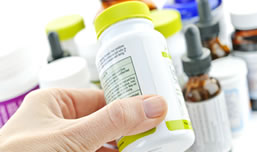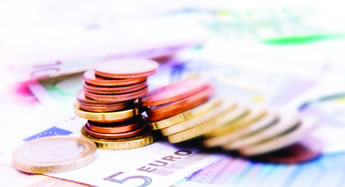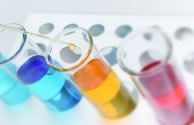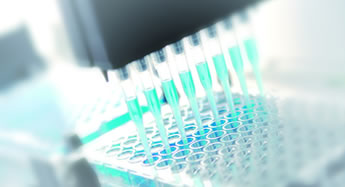Reimbursement of biosimilars
With much interest focussing on biosimilars, lawyers from our European team discuss the difficult issue of how these are to be reimbursed
May 2013
Contents of this article
Improvements in technology and pressures to diversify business models away from small molecule drugs are just two of the factors that are focussing attention on biologics and, therefore, biosimilars. However, the complexities of biosimilars mean that they cannot be treated simply like generics. One area in which this is an issue is in the question of how biosimilars are reimbursed. Here we discuss biosimilar reimbursement in Austria, France, Germany and the UK.
Austria
In Austria, the term “generic” is defined in the Austrian Medicinal Product Act in accordance with EC Directive 2001/83. It refers to a medicinal product which has the same qualitative and quantitative composition in active substances and the same pharmaceutical form as the reference medicinal product and whose bioequivalence with the reference medicinal product has been demonstrated by appropriate bioavailability studies. The different salts, ethers, isomers, mixtures of isomers, complexes or derivatives of an active substance are considered to be the same active substance, unless they differ significantly in properties with regard to safety and efficacy.
On the other hand, Austrian Law does not define the term “biosimilar”.
In Annex I of EC Directive 2001/83 however there is a distinction between “generics” and “biological medicinal products”, and the procedure for obtaining a marketing authorisation is different for generics and biosimilars under the Austrian Medicinal Product Act. While for generics general bioequivalence studies are sufficient, pre-clinical tests or clinical trials are required for biosimilars which do not meet the requisite conditions to be categorized as generics in order to obtain marketing authorization. This is, in particular, because of differences in raw materials or manufacturing processes. This shows that for the purposes of the legislation there are biosimilars which can be compared to generics while others cannot. Consequently, when obtaining marketing authorization there are different requirements for generics and biosimilars.

But what is the situation when it comes to cost reimbursement? In Austria, it is disputed whether biosimilars are to be treated like generics or not for this purpose. The price of generics which are to be included into the reimbursement list of the Austrian Social Securities Association is regulated: upon the first availability of generic competition, a staggered price-reduction system is applied. At that point, the price of the original product has to be reduced by 30% and the generic has to be 25.7% below the reduced price of the original product. Subsequent generics have to be sufficiently less expensive than the first generic. By contrast, non-generics, which provide identical or similar therapeutic efficacy compared to an established listed pharmaceutical, just have to enable medical treatment at costs which are a minimum of 10 % below that of the established product. Consequently, the question of the applicability of re-imbursement rules for generics is of crucial importance for both pharmaceutical companies and health funds.
According to the literature, it is assumed that biosimilars are not to be considered generics with regard to re-imbursement. This is in line with the differentiation in medicinal product law and case law of the Independent Commission for Medicinal Products (Unabhängige Heilmittelkommission, UHK). The UHK took a strict approach in a decision in 2004 concerning medicinal products used for transplantations when it stated that a follow-up product (generic) must be evaluated very critically regarding bioequivalence and therapeutic equivalence, and that even the smallest differences may mean that the product cannot properly be regarded as a generic.
On the other hand the corresponding ATC code of generics and biosimilars could indicate that the substances are equal. However, a government bill from the Ministry of Health dating back to 2008 explicitly stated that biosimilars are not to be considered identical to their reference products, despite the fact that some biosimilars are identical. Thus the strict approach that the reimbursement system provides for generics does not seem to be suitable for the less homogenous group of biosimilars.
While the generic rules eventually could be appropriate for those biosimilars whose properties do not differ significantly from the reference product with regard to safety and efficacy, for those with significant differences the application of the rules for pharmaceuticals with (only) identical or similar therapeutic efficacy might be more suitable. This means that each biosimilar requires different consideration when the requirements of reimbursement have to be evaluated, and a mere reference to the rules for generics is not appropriate.
France
Under the French Code of Public Health, biosimilar medicines are defined as biological medicinal products having the same qualitative and quantitative composition in active substances and the same pharmaceutical form as a reference biological medicinal product, but which do not fulfil the conditions to be considered as a generic medicinal products because of the differences relating in particular to the variability of the raw materials or to the manufacturing process.
As a result of their greater complexity and of a certain degree of natural variability, biosimilar medicines cannot be considered as strictly identical to their reference medicines, so that they are subject to stricter controls than generics. Therefore, in order to obtain marketing authorisation, additional pre-clinical and clinical data need to be provided to show the similarity of their quality, safety and efficacy in comparison with the reference product.
In addition to the marketing authorisation, the company which exploits the relevant medicinal product may request its registration on the list of reimbursed products by the Public Health Insurance (French Securite Sociale).
The registration is decided by the Economic Committee for Healthcare Products (Comité Economique des Produits de Santé) on the basis of the opinion of the Transparency Commission of the French National Authority for Health (Haute Autorité de Santé - HAS), which assesses the therapeutic value of the relevant product. The reimbursement rate is decided according to the therapeutic value as well as to the usual seriousness of the disease the medicine is designed to treat.

Prior examination by the Transparency Commission is not needed for generic medical products, since they are presumed to fulfil the condition of therapeutic value of the corresponding medicine of reference. The French administrative court has also indicated that generic products should benefit from a reimbursement rate (15%, 30%, 65% or 100%) identical to the one of the corresponding medicine of reference.
In contrast, biosimilar medicinal products are not covered by this derogation, and therefore they need to be individually analysed by the Transparency Commission prior to the decision by the Economic Committee for Healthcare Products and their registration in the list of reimbursable products.
In practice, seven biosimilar medicines are currently marketed in France, three of which are subject to specific restrictive conditions for reimbursement. For these medical products, reimbursement is subject to the prior agreement of the medical service/control of the Securite Sociale.
Regarding the prices of biosimilars, the rules are the same as those which apply for all reimbursable medicinal products. Prices are fixed upon negotiation between the company exploiting the medicinal product and the Economic Committee for Healthcare Products. As regards biosimilars, the Committee has not developed a clear position in relation to the setting of prices. However, from a practical standpoint, it can be observed that the price difference between the reference medicines and the corresponding biosimilars is of 30% on average, whereas the average price difference between originators and generics is of around 60%.
Germany
In principle, in Germany biosimilars are governed by the statutory provisions applicable for generic medicines. Marketing authorisation for generic medicinal products generally requires that the medicinal product in question has the same qualitative and quantitative composition of active substances and the same pharmaceutical form as the reference medicinal product and that the bioequivalence has been demonstrated in bioavailability studies. However, different salts, esters, isomers, or derivatives etc of an active substance are considered to be one and the same active substance unless their properties differ significantly with regard to safety or efficacy.
As regards biosimilars, according to the German Medicinal Products Act (Arzneimittelgesetz – AMG), where a biological medicinal product which is similar to a biological reference medicinal product does not meet the conditions for generic medicinal products, the results of appropriate preclinical tests or clinical trials relating to these deviations must be provided.
In general, manufacturers are free to set ex-factory prices. Authorised medicinal products with an ex-factory price are principally reimbursable by the statutory health insurance funds except the product is subject to price regulation. According to Volume V of the Social Insurance Code (Fünftes Buch Sozialgesetzbuch - SGB V) manufacturers have to grant obligatory rebates for prescription pharmaceuticals to the statutory health insurance system. As the social health insurance system insures approximately 90 percent of the German population the reimbursement by the statutory insurance system is essential to pharmaceutical manufacturers.

Moreover, reimbursement reference prices restrict the free setting of prices. Reference prices are price limits on certain pharmaceutical substance groups. They determine the maximum amount statutory health insurance providers will pay for a pharmaceutical of a certain substance group. It is solely an instrument for regulating prices and does not place any restrictions or exclusions on prescriptions. If a pharmaceutical company does not lower the price of a pharmaceutical to the reference price of the group the drug is classified under, insured persons must pay the price difference themselves.
Reference prices are determined in a multi-phase procedure according to SGB V. First, the Federal Joint Committee (G-BA) specifies groups of active ingredients for which reference prices can be set. Reference price groups list active ingredients, not branded or generic names of pharmaceuticals. Reference price groups are distinguished as pharmaceuticals with identical active ingredients (level 1), pharmaceuticals with pharmacologically and therapeutically comparable active ingredients, particularly with chemically related substances (level 2) and pharmaceuticals with therapeutically comparable effect, particularly combinations of pharmaceuticals (level 3). The G-BA then specifies the necessary average daily, individual dose, or other appropriate prescription-related average doses to be used in later calculations of reference prices. On the basis of these prescription-related average doses, the Central Association of Statutory Health Insurance Funds (the umbrella organization of statutory health insurance funds) then sets the reference prices.
The G-BA decided in the case of growth hormone products (active ingredient Somatropin) that a biosimilar medicine and its reference medicine are interchangeable and imposed the same reference price across all growth hormone products, including biosimilars.
Since 1 January 2011 there have been new pricing regulations for newly authorised pharmaceuticals and their reimbursement by statutory health insurance providers. The G-BA and the Institute for Quality and Efficiency in Health Care (IQWiG) conduct benefit assessments of newly authorized pharmaceuticals in accordance with SGB V. Their findings form the basis of decisions on the prices statutory health insurance funds pay for new pharmaceuticals with new active ingredients. If the G-BA decides that the new pharmaceutical does not have any additional benefit over the appropriate comparator, it will be included in the reference price system within six months of market launch. If a pharmaceutical without additional benefit cannot be allocated to a reference price group, a reimbursement price will be agreed on with the manufacturer. Currently, the G-BA holds the opinion that biosimilars are not to be considered as new active ingredients and, therefore, are not subject to this pricing regulation.
UK

Biosimilars are not treated in the same way as small-molecule generics in a number of different respects, not least in that biosimilars are authorised under a different regime. As explained below, biosimilars are also different when it comes to pricing.
In the UK, the price of generic drugs need not be applied for or listed as is the case in other countries. Instead, the price of generic drugs is determined by ordinary market forces: a generic manufacturer selling to wholesalers and pharmacists at a negotiated price. When a prescription is dispensed by a pharmacist, the re-imbursement that the pharmacist receives is determined by the drug tariff. The drug tariff is set based on how available generic drugs are: category C, A and M.
Such a mechanism is possible for small-molecule generics because the majority of drugs are prescribed by international non-proprietary name (INN) and so any product with that INN, brand or generic, can be dispensed to satisfy and the prescription. In the UK, biological products are not prescribed by INN and it is not possible to substitute a biosimilar for a prescription written for the brand (or another biosimilar). The MHRA issued the following guidance in February 2008 for biosimilars:
"When prescribing biological products, it is good practice to use the brand name. This will ensure that automatic substitution of a biosimilar product does not occur when the medicine is dispensed by the pharmacist."
The position is similar across most of the EU and under Directive 2012/52/EU, member states will have to require the brand name of a biological product to be included in prescriptions1. So, effectively, biosimilars should not be substitutable anywhere in the EU.
The mechanism for reimbursement of biosimilars must therefore be different. There are two possible regimes that might apply to the pricing of a biosimilar: the statutory regime which is administered by the MHRA2 or the Pharmaceutical Price Regulation Scheme (PPRS). The PPRS is a non-contractual agreement between the Department of Health and the Association of British Pharmaceutical Industry (ABPI) that is intended to provide a balance between the cost to the NHS and a fair return for pharmaceutical companies. The statutory regime is the default option but many pharmaceutical companies are members of the ABPI and, in any event, it is open to non-members to join the scheme so more commonly it is the PPRS that is the relevant regime.
 The PPRS applies to all biotech products and so also to biosimilars. As such, biosimilars are effectively treated as brand products or branded generics and a price must be set under the PPRS. New active substances may be priced at the discretion of the company on entering the market. Biosimilars will not be new active substances, rather they will be "complex" branded generics, and so under the current system companies launching biosimilars must seek the Department of Health's agreement to the price of the new product. Such agreement may require negotiation so applications for pricing of biosimilars should be made at least 4-6 weeks before intended launch.
The PPRS applies to all biotech products and so also to biosimilars. As such, biosimilars are effectively treated as brand products or branded generics and a price must be set under the PPRS. New active substances may be priced at the discretion of the company on entering the market. Biosimilars will not be new active substances, rather they will be "complex" branded generics, and so under the current system companies launching biosimilars must seek the Department of Health's agreement to the price of the new product. Such agreement may require negotiation so applications for pricing of biosimilars should be made at least 4-6 weeks before intended launch.
The PPRS is renegotiated every 5 years and is due to be renewed in 2014. In addition, a new system of value-based pricing, administered by the National Institute for Health and Clinical Excellence (NICE), comes into force on 1 January 2014. The details of this new system are not clear at the moment but it is understood that it will apply only to new medicines, and so the PPRS system will continue to apply to biosimilars.
If you have any questions on this article or would like to propose a subject to be addressed by Synapse please contact us.


Wolfgang Rehmann
Wolfgang is Of Counsel in the Pharmaceutical & Patents group based in our Munich office.


Evelyne Friedel
Evelyne is a partner and Head of Antitrust and Business Law for France based in our Paris office.

Dr. Manja Epping
Manja is a partner and Head of Life Sciences for Germany based in our Munich office.
"In the UK, the price of generic drugs need not be applied for or listed as is the case in other countries. Instead, the price of generic drugs is determined by ordinary market forces: a generic manufacturer selling to wholesalers and pharmacists at a negotiated price."
"France: has not developed a clear position in relation to the setting of prices. However, from a practical standpoint, it can be observed that the price difference between the reference medicines and the corresponding biosimilars is of 30% on average, whereas the average price difference between originators and generics is of around 60%."

